Powergrid - the backbone of India's energy value chain
The government owned entity with a mission critical mandate seems to be a compelling long term investment
Overview
Powergrid (NSE: POWERGRID) owns and operates 45% of India’s electricity transmission network. It meets all the criteria for a good long term investment:
Moat: the dominant player in transmission. Has 20~30 year contracts with assured ROEs. Is the government’s preferred vendor for large scale or complex transmission projects
Long growth runway: increasing Indian power consumption and massive investments in new renewable power generation capacity
Management execution: consistently exceeded regulatory benchmarks with 99%+ transmission system availability and demonstrated ability to execute large scale projects over the last decade
Attractive valuation: limited downside possibility at current prices, with attractive returns on the upside. Risks to the growth trajectory: regulatory regime and tariff changes, competition by private players and fraud / corruption.
The valuation summary is below and detailed analysis follows - please go through and let me know your thoughts!
Contents:
Indian electricity demand
Energy access is the basic building block of an economy and is a key focus area for the Indian government currently. In the last 40 years, Indian household electricity access has improved from ~26% in 1980s to 99%+ in 2023.

Despite having grown 6~8% annually for the last decade, the per-capita electricity consumption in India is less than half of the global average, 4 times lower than China and 10 times lower than the US. Hence, India’s electricity consumption is expected to continue growing in the coming decades at an even faster pace than the last due to:
Increased GDP growth, urbanization, computing and data centers
Rural electrification, with the government targeting 24X7 power for all consumers
High speed railway lines and new freight railway connections
Adoption of electric vehicles, with the government planning to grow the EV market share from ~3% currently to 30% by 2030.

Electricity demand and supply mismatches have reduced drastically in the last 10 years. However, power outages are still common in many parts of the country, especially during peak demand periods. This has caused virtually all large factories and wealthy households in India to procure back-up solutions such as Diesel generators and UPS (Uninterrupted Power Supply) systems. To tackle this, the government is investing heavily in new generation capacity in new power projects.
Energy value chain
Electricity generation
Currently, Indian energy generation is primarily coal-based (~50% of total capacity and ~70% of total generation). However, the Indian government has committed to produce 50% of its total electricity from non-fossil fuel sources by 2030.
Even if renewable energy ramps up to 50% of capacity as per the government’s targets below, thermal power (coal) and nuclear would still play a key role, as solar, wind and hydro energy have a much lower capacity factor, not being able to supply constant energy throughout the day and year.
Transmission and distribution
India’s electricity grid is a key part of the value chain, connecting power sources and power surplus regions to consumption regions. Power supply to end consumers is managed by Distribution Companies (DISCOMs). There are 45 state-owned DISCOMs and 14 private DISCOMs serving the 28 states of India.
DISCOMs generally procure base load power requirement through 20+ year Power Purchase Agreements (PPAs) with power producers. For seasonal loads, the DISCOMs, procure power on a short term basis which is usually a period of less than a year, from power exchanges such as IEX (Indian Energy Exchange).
For transmission, the country had been divided into five regions: (North, North-East, East, West, South). There is a mismatch in region-wise electricity demand and capacity, as the current power plants are located close to Coal and Hydroelectric projects, which are far away from population centres. Prior to 1992, each region had a separate electricity grid, preventing power sharing across regions. Between 1992 and 2013 all the 5 grids were connected under the government’s “One Nation-One Grid-One Frequency” plan, allowing power to be routed across the country, vastly reducing power outages and improving power plant utilization.
The spread of natural resources and climate conditions, resulted in a high complex power generation landscape, as you can see below.
Link: interactive energy map of India
Another issue is the transmission and distribution losses caused by energy dissipation, pilferage and faulty meters. Although , this has reduced from ~30% in the early 2000s to ~19% last year.
Powergrid’s business model
Powergrid (Power Grid Corporation of India Limited) was set up by the Indian govt. in 1989 with a goal to pool expertise in the power transmission sector. Until 2011, it was the only firm allowed to establish inter-state transmission networks. Even after the entry of private players, it still owns around 85 per cent of the inter-state network and close to 45 per cent of the overall domestic network.
Business operations are distributed into 3 segments: transmission, telecom, and consultancy, with the transmission segment accounting for more than 97% of total revenue from operations.
Powergrid bids on new transmission projects where the tariff is either fixed based on:
Revenue and Tariffs Model (RTM) represents 90%+ of revenue.
Contract based on AFC (Annual Fixed Cost) consisting of tariff components such as Return on Equity, Interest on Outstanding Debt, Depreciation, Operation & Maintenance expenditure and Interest on Working Capital.
Here, Powergrid is guaranteed a Return on Equity (ROE) rate of 15.5% from 2019 to 2024.
This ROE is decided by CERC (Central Electricity Regulatory Commission) guidelines and gets revised every 5 years (in the previous 5-year period, the ROE was also at 15.5%)
The ROE calculation assumes a 70:30 debt-equity ratio
TBCB (Tariff Based Competitive Bidding) is currently less than 10% of revenue:
A competitive bidding process where the lowest levelized tariff determines the winner. Contracts are usually for 35 years.
Annual rate escalations are also determined by CERC guidelines.
Powergrid management has indicated that there is substantial competition from private players in TCBC contracts and the ROEs are expected to be “low double digits”
Powergrid management and shareholders
Powergrid shares are 51% owned by the government directly with other prominent holders being:
Govt. of Singapore: 2.4% shareholding
PPFAS mutual fund: 1.3% shareholding (this is what prompted me to do a dee-dive into the company, as this a fund that I follow)
The current management team each has 30+ years of experience in the field
10 board members in total; 2 government nominated and 3 other independent directors
Unlike other PSUs, they have quite a lean workforce. Headcount has actually reduced from ~10k in 2018 to 8.7k even though revenues have almost doubled since then
The management team has good track record over the last few years:
Maintaining the high transmission system availability of 99%+
No major network failures since the 2012 country-wide blackouts, after which various reforms were put in place to prevent future failures
Growing tangible book value from ₹742B in FY14 to ₹1838B in FY22 (2.5x)
Increasing ROE from 13~14% inFY14 to 17%~18% currently
There have been corruption cases in the past, with the latest case in 2022 involving Powergrid officials and Tata Power, leading to an arrest of a Powergrid Executive Director and 5 others
Powergrid has received funding from international agencies like the World Bank and Asian Development Bank in the past, which have stated their confidence in the company’s management and corporate governance policies
Financials
Powergrid has an efficient operating structure, with gross margins of ~87% and net profit margins of ~33% in the last 2 years. The main costs:
Operating costs (~13% of revenue): mainly manpower and maintenance related.
Depreciation (~30% of revenue)
Loan interest payments (~24% of revenue)
Relatively high debt (60:40 debt equity ratio). But interest payments are easily covered by the high cash flows, which are very predictable for the next 20+ years
Current interest coverage ratio is ~4x
Powergrid earlier had a 80:20 debt equity ratio, but reduced this by pre-paying debt with operating cash flows and divesting 5 projects via an InvIT offering in , which raised ₹33B INR in cash and offloaded ₹57B in debt
Powergrid is rated ‘AAA’ (stable) by CARE, CRISIL & ICRA due to the “strategic importance to the government, stable cash flow and strong operating efficiency”
Average Cost of Borrowing was 7.59% in Q1FY24
High ROE and ROCE, which have been improving for the last 8 years:
Capital allocation and dividend
Over the last 10 years, excess funds have primarily been used to fund new transmission projects, pay a dividend to investors and repay debt
The company had aggressively invested in CAPEX from 2016 to 2019 - around 2~3x of annual profits.
However, since 2020, CAPEX has been reduced significantly and dividend payout has increased from 20~40% to 60%+.
Management has also de-leveraged the balance sheet from a 70:30 debt to equity ratio in 2020 to 60:40 currently, by repaying ₹200B of loans over the last 4 years.
The average CAPEX for the last 3 years has been ₹82B annually. However, going forward, the management has forecasted CAPEX will increase to ₹150B~₹200B per year until 2032, requiring fresh debt.
Management have not provided any guidance regarding future dividend payouts. However, from their allocation history, it seems as though their preference is to deploy capital into new transmission projects, where they are able to earn 15%+ returns on equity and pay out remaining excess cash as dividend.
This would benefit long term investors, as 15% tax-free returns on equity are superior to taxable dividend payouts in my opinion
The recent InvIT offering caused a spike in PAT in FY22. Ignoring this one-off, PAT has grown at a CAGR of 15% since 2015 and should continue to grow at a similiar pace for the next 10 years due to the planned renewable energy projects and increasing rural electrification
Competitive advantages / moat
Powergrid is a virtual monopoly in inter-state transmission, with 85% of inter-regional capacity. There is a very low chance that existing contracts will be cancelled, as there is usually only one high voltage transmission line connected power sources to demand centres
Duplicating or replacing Powergrid’s existing infrastructure would be highly capital intensive. Hence, the company is very likely to renew a majority of exiting contracts upon their expiry
High visibility of future cash flows: TSAs (Transmission Service Agreements) usually have contract lengths of 25+ years. New contracts are usually granted to a single bidder, so the return on equity is predictable for the entire contract period
Low chances of large-scale network failures: electricity transmission is vital for India’s functioning. Hence, apart from Powergrid themselves, the Ministry of Power and various other government entities closely monitor grid performance and security
Powergrid is 3rd amongst Indian public sector companies (shown below) in terms of overall net profit; Hence, it attracts some of the top Engineering talent in the country
Runway / future growth potential
The main revenue growth opportunity for Powergrid are new power projects in the renewable space. The government is targeting increasing renewable capacity from 160GW to 500GW by 2030 (18% CAGR target).
In the case of national priority projects, which has a tight schedule, advanced technology (e.g., high-voltage direct current), or have defense sensitivities, the government usually nominates Powergrid directly. Examples:
Large scale solar park projects in Rajasthan and Gujarat
The Green Energy Corridor in Ladakh
Powergrid management forecasts a CAPEX outlay of ₹1880Bn until 2032, which would double their current net fixed assets (₹1723Bn). A break-down of the CAPEX outlay:
91% transmission projects
8% smart metering infrastructure
1% in captive solar power and data centres
From their InvIT valuations, it seems as though some of the transmission assets have a useful life longer than the contract lengths of 30~35 years. If they are able to renew these contracts at favorable terms, they could theoretically achieve a far higher return on investment compared to new projects
Apart from the transmission opportunity, there are further growth opportunities outlined in the annual report. However, as these currently represent only ~3% of revenues, I’ve ignored them for now in my valuation
Non-fossil fuel and green Hydrogen: integration of renewables will require a strong, flexible, and resilient grid.
Cross-border inter-connections with our neighbouring countries such as Bangladesh, Bhutan, Myanmar, Nepal, Sri Lanka and the ASEAN countries.
Investment in the development of transmission infrastructure in Africa and other emerging countries
Battery Energy Storage Systems (BESS): Utilizing rechargeable batteries to store excess energy during times of low demand and discharge it when demand is high
Risks
The Indian government is the majority shareholder and transmission regulator, which may cause potential conflicts of interest
Example: In 2020, the Powergrid board agreed to give a ₹10B rebate to DISCOMs due to the the Covid lockdowns, which was requested by the Ministry of Power. This represented ~9% of net profit at the time.
A change in the regulatory regime could result in lower future returns
Tariff regulations are set by the CERC and valid for 5 years at a time. The new regulations are being drafted and will commence from April 2024 until 2029. There is a risk that tariffs or regulated ROEs would change in this new regime.
Weak credit risk profiles of state power utilities (DISCOMs), which contribute virtually all of Powergrid’s revenue
Overall DISCOM debt increased from ₹5860Bn in FY21 to ₹6200Bn in FY22
Despite these issues, Powergrid has a strong collection track record of over 98% in last two years. This is expected to continue going forward, due to Powergrid’s “payment security mechanisms” in the form of Letter of Credit (LC) guaranteed by the central / state governments and RBI (Reserve Bank of India). In the event of a payment default, Powergrid would directly be paid by RBI, who would deduct the amount from the state’s funds
Reduction in system availability due to:
Neglected maintenance leading to infrastructure break-downs (shown below)
Natural disasters - although this is partially mitigated by Powergrid’s “self-insurance” fund of ₹10B and external insurance agencies
WIP and new project risks:
Project approval and construction delays
Availability of land for construction of Substation/ transmission lines
Forest/wildlife Clearances challenges
In-efficient capital allocation and favouring un-economical projects
Higher than expected project costs
Fraud, bribery and quid-pro-quo
High debt and variable interest rate linked to the T-bill rates
Tariff escalations are controlled by CERC (Central Electricity Regulatory Commission). There is no guarantee that Tariffs will increase in line with inflation
Higher than expected OPEX inflation eroding cash flows from TBCB (Tariff Based Competitive Bidding) contracts
Inability to win new TBCB projects due to aggressive bidding by private companies, leading to slower growth
Phasing out of non-renewable power plants, making the associated transmission lines and assets redundant
Valuation
I looked at 3 valuation scenarios based on the key growth levers for Powergrid:
The current price seems to be close to the “bear” case, where the company only grows 4% annually for the next decade. Even this case potentially presents an attractive investment opportunity with an IRR of 11%. That would be low for a “typical” company, which is subject to various external factors and earnings fluctuations. However, Powergrid is pretty much the opposite, where the core business is critical infrastructure for country and almost all of revenues are on government backed long term contracts of 20+ years.
From the latest Powegrid conference call and recent renewable energy power project approvals in India, I would assume that the base or bull case is much closer to reality, with Powergrid growing at 12%+ for the next decade.
The full base case valuation can be found here (google sheets)
Conclusion
“The best business to own is one that over an extended period can employ large amounts of incremental capital at very high rates of return,” - Warren Buffett, 1992
I had initially come across Powergrid via the mutual fund PPFAS, which had recently taken up a large stake in the company, representing ~5% of their overall fund. Rajeev Thakkar, their chief investment officer, describes their investment rationale here.
After digging into the business in detail, I can conclude that it is one of the best businesses in India to own for the long term investor due to the criticality to India’s energy future, high ROEs and long investment runway.
As always, please share your views and feedback - that is the main reason I continue to work on these articles. Also, let me know if there are other compelling investment opportunities I should cover.
Disclaimer: The author is not a registered investment advisor and the information contained in this publication is not intended to constitute individual investment advice and is not designed to meet your personal financial situation. The opinions expressed in such publications are those of the publisher and are subject to change without notice. I may from time to time have positions in the securities covered in the articles on this website. I use company declarations and open source information sources believed to be reliable, but their accuracy cannot be guaranteed. The author, shall in no event be held liable to any party for any direct, indirect, punitive, special, incidental, or consequential damages arising directly or indirectly from the use of any of this material.
Sources
Indian power sector at a glance (Ministry of Power)
Indian household electrification dashboard (Govt. of India)
PPFAS: Indian Power Sector 2.0
11th Annual Integrated Rating & Ranking: Power Distribution utilities
Transmission and Distribution of Electricity in India Regulation, Investment and Efficiency (Yoginder Alagh; Chairman, IRMA)
Asian Development Bank report on Powergrid’s solar park transmission project
Appendix
Other interesting info I found when researching this article : google slides link
Unit economics of a transmission project
The recently launched InvIT gave us a glimpse into the unit economics of a transmission project: we can use the VTL (Vizag Transmission Limited) project as an example
Project EV (Enterprise value): ₹18.7B
Equity: ₹11.1B (63:37 debt to equity)
Gross block (asset value): ₹13.1B
Contract length - 35 years; Start of operation was 2017, so 29 years are left on the contract
Revenue: of ₹2.2B annually - stay almost constant throughout the project
Free cash flow of ₹1.67B in the first year ignore working capital changes, declining to ₹1.46B in year 28 (last full year of contract) - an average decline of 0.5% annually due to OPEX inflation and maintenance costs
ROE starts at 16.5% in the first year and approaches 11% in year 29 (average of 14.4% throughout the project), as this is a TBCB project without regulated ROEs
The assets seem to have more than a 35 year lifetime, as the report mentions that the “project assets will continue to have economic utility beyond the term of the TSA (contract)”
The ROE trend for all 5 InvIT projects is given below. Aggregate ROE for all 5 was 18.9% - similiar to Powergrid current ROE.
Due to the way that the InvIT is structured, investors buy both the debt and equity of the 5 projects below. Hence, the distributions of the InvIT are lower than the ROE numbers, starting at ~11% and reducing to 6~7% in later years:



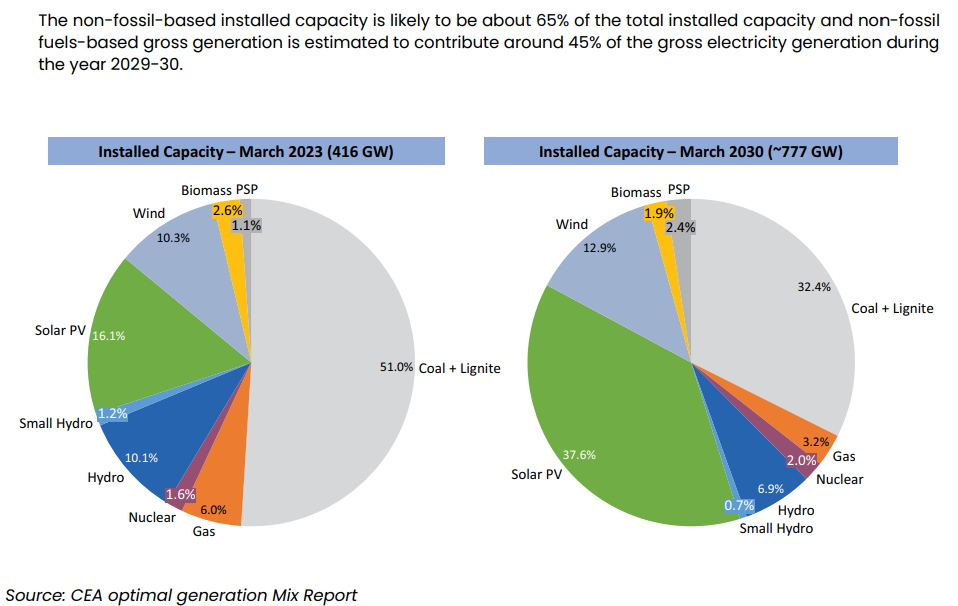



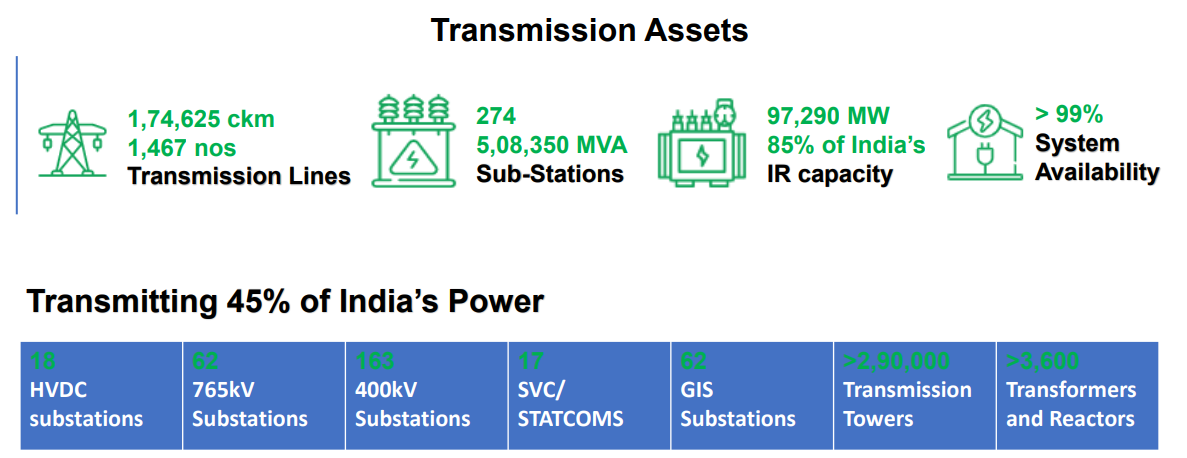


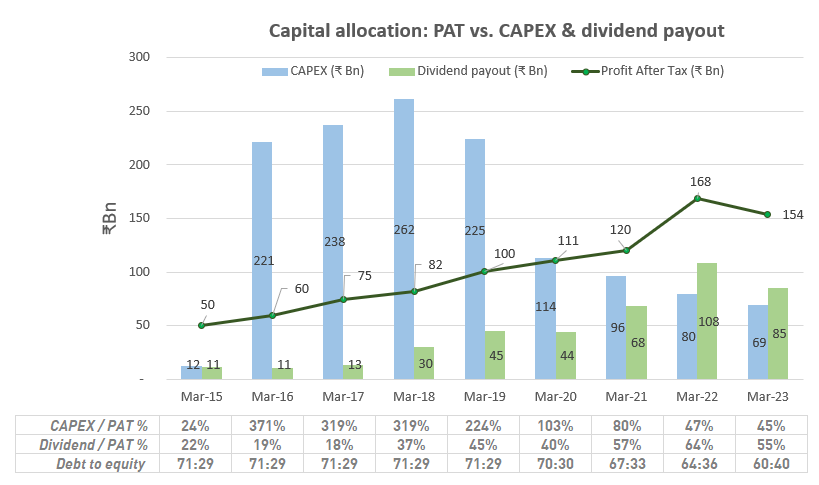
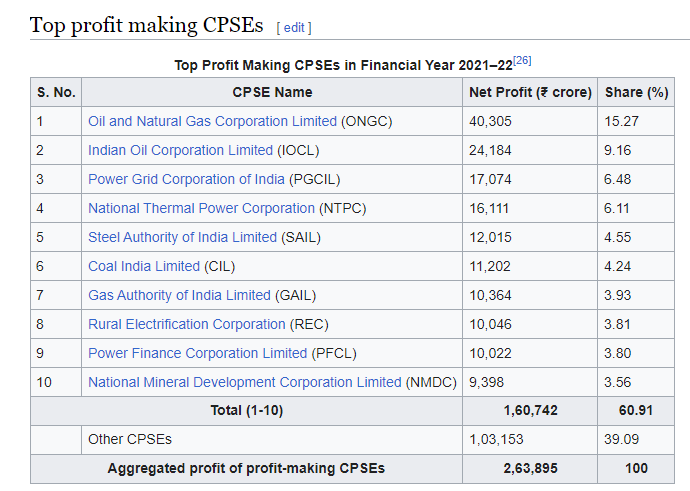

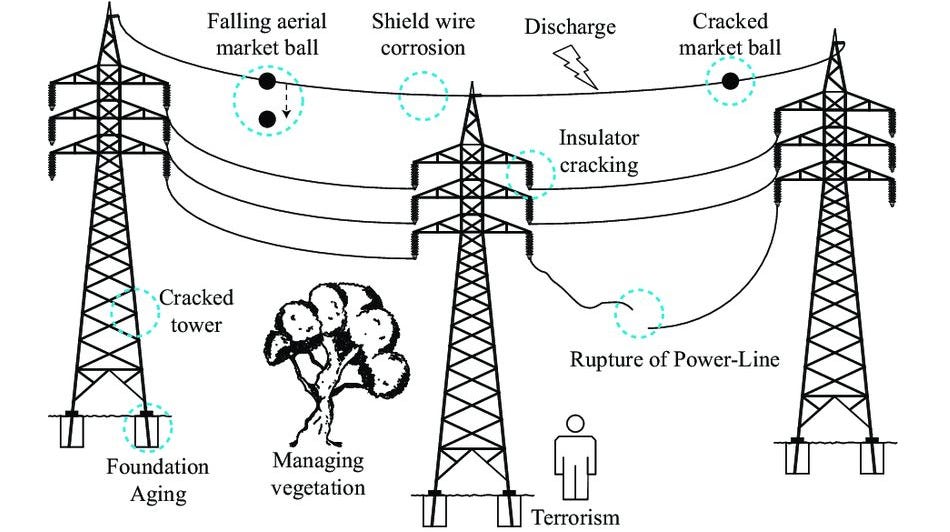


Excellent write up and analysis. The tailwinds are good CERC assures cost plus structure ensuring consistent profitability.